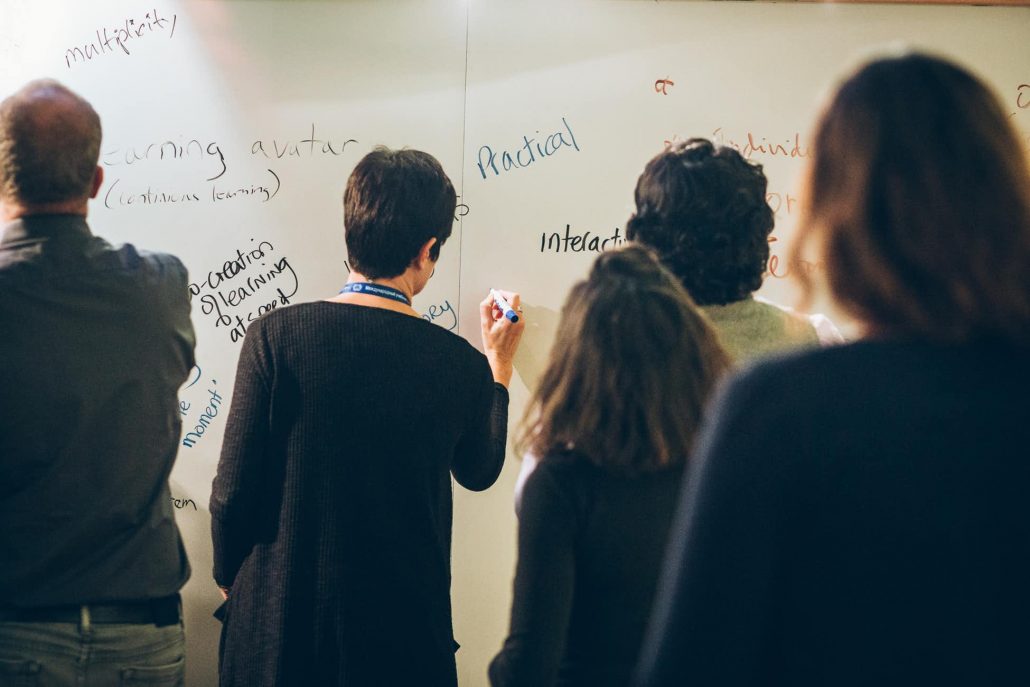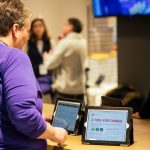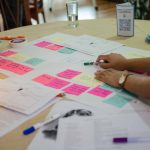Brainstorming

Fostering the flow of innovative ideas
Overview
Brainstorming is a well-known, fast approach to collecting ideas. It is inclusive, encourages creativity and stimulates spontaneous thought processes. It can generate inspiration for innovation.
How to use it
- Produce ideas and stimulate creativity
- Define ideas
- Overcome blocks and think critically
- Plan approaches or solve problems
How to apply it
Start:
Present the subject (e.g. a problem, project, outcome, organization or idea) to the group as a challenge.
Setting:
Involves entire group, with a facilitator to record ideas. If the facilitator is writing down ideas, it is helpful also to have a moderator, to ensure that all ideas are properly captured and that the process is well managed.
Materials:
Flip-charts or sticky-notes to record ideas.
Time/Steps:
- If the group is larger than 15 people, divide into smaller working groups, to encourage balanced participation.
- Clearly establish the two critical rules:
- There are no bad ideas. Now is the best time to think outside the box.
- No judgements will be accepted, because this is the stage for free flowing of ideas.
- The ideas generated can be captured in many ways. E.g. participants speak out loud and a facilitator writes the points on flip-charts or participants write their ideas on sticky notes after announcing them.
- When no more ideas are being offered, allow about 2 more minutes of silence, to be sure that every idea has truly been shared.
- The ideas generated can inform subsequent exercises on the content, such as Case Studies or De Bono Six Thinking Hats.
- To organise ideas further, cluster sticky notes into logical groups of related ideas for later review.
- To evaluate the ideas, use methods such as Dotmocracy: clearly display all ideas and instruct participants to place a sticky dot, or other indicator, underneath the ideas that seem most promising. Select the ideas with the most “votes” for further analysis or action.
- Conduct a participatory debriefing of the brainstorm, at which stage the exercise concludes
How to adapt it
- Brainwriting
- A simple way to represent the ideas collected is to use a free online tool to generate a word cloud: http://www.wordle.net.
- Buzzgroups are small brainstorming groups, where participants share their individual ideas and prioritize them. The highest-rated ideas from all groups are then presented and clustered to create an overview.
- Online Brainstorming can be used in Phase 1 of the blended learning approach by inviting participants to share ideas in a discussion forum or wiki, or using synchronous technologies.
- Three Stage Brainstorming starts by conducting a short brainstorm on simple topics to get participants into the creative thinking mode.
- Move on to the “brain dump” stage, inviting all thoughts on the specific subject.
- Phase 2, “divergent thinking”, asks participants to produce ideas related to those already captured, such as risks, implementation or resources.
- The final phase, “creative ideation”, examines ideas in more depth and reformulates them into possible solutions.
- See the Top 100 Lists method for another approach to Brainstorming, or TRIZ for reverse brainstorming methods.
Tips
- Create a productive, playful atmosphere to encourage participants to relax and share without inhibitions.
- Allow the process to take a natural course, without time limits or directions. To help this, carefully select a specific, concrete subject.
- To make practical use of the ideas, follow the exercise with convergent processes, to cluster and evaluate them.
- Brainstorming topics need not be negative problem statements. They can also examine positive scenarios or wanted consequences.
Resources
- For a case study of combined Brainstorming and Card Sorting, see this blog post: http://tinyurl.com/397y54c
- Comprehensive article on Brainwriting: http://litemind.com/brainwriting/





